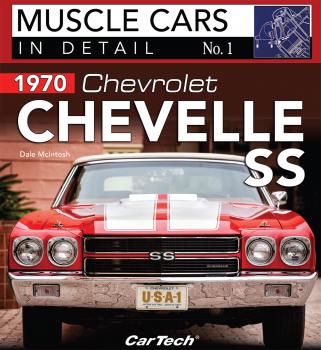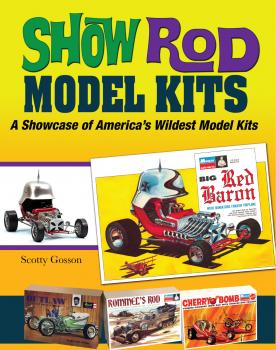Автомобили и ПДД
Различные книги в жанре Автомобили и ПДДAston Martin Engine Development: 1984-2000
The pace at which technology progresses within the motor industry can be incredibly fast. What may have seemed an almost insurmountable problem in the late 80s and early 90s and therefore a major achievement when resolved, would now seem a minor inconvenience due to the advances made in component technology. Aston Martin Engine Development thoroughly details the design and development of Aston Martin engines including the 580X Vantage, the Virage, and the V8 Coupe. In particular it focusses on the twin supercharged 32 valve Vantage engine – an engine which set new standards, being the most powerful production car engine in the world at the time of its release in 1992. Illustrated with photographs from that time and including power and torque curves, this book provides a unique look into a period of Aston's history, written by one of the key men involved in making it happen. It gives an insight into life at the AM factory at Newport Pagnell; an understanding of the benefits of Supercharging at the time of manufacture; and a historic record of engine design, development and production that would otherwise have been lost to time.Aston Martin Engine Development will appeal to Aston Martin owners and enthusiasts and to anyone else with an interest in engines and high-performance cars.
1970 Chevrolet Chevelle SS
As in all In Detail Series books, you get an introduction and historical overview, an explanation of the design and concepts involved in creating the car, a look at marketing and promotion, and an in-depth study of all hardware and available options, as well as an examination of where the car is on the market today.
Show Rod Model Kits
Whether you are interested in picking up the collecting hobby, just want a few cool kits from your childhood to display, or simply want to reminisce about building and obsessing over these crazy kits from your youth, Show Rod Model Kits: A Showcase of America's Wildest Model Kits will be a fun addition to your library.
1969 Plymouth Road Runner
Volume No. 5 of CarTech's Muscle Cars In Detail series covers the wildly popular 1969 Plymouth Road Runner and includes an introduction and historical overview, an explanation of the design and concepts, a look at marketing and promotion, and an in-depth study of all hardware and available options, as well as the market value for the car today.
1001 Drag Racing Facts
Spanning the 1950s through the 1970s, 1001 Drag Racing Facts is packed with well-researched drag racing facts that even some of the most hard-core drag racing fans might be surprised to learn. Covered are all the popular classes of racing of the era: Top Fuelers, Funny Cars, Pro Stocks, Eliminators such as Gassers and Altereds, Stocks, Super Stocks, and more.
1969-1970 Ford Mustang Boss 429
Not to be outdone by Chrysler, Ford had to build and field its own race-duty big-block to compete with the 426 Hemi in drag and stock car racing. In competition trim, the Boss 429 powered Ford and Mercury stock cars to victory in NASCAR and the Mustang to many wins in drag racing. With this exclusive racing pedigree, the Boss 429 is among the most valuable and rare Mustangs ever built. The project was the brainchild of Bunkie Knudsen, noted stylist Larry Shinoda, and other talented Ford personnel. The semi-hemi Boss 429 was so large, it couldn't fit in the small Mustang, so Kar-Kraft, a specialty car builder, had to shoehorn the engine into the compact Mustang fastback. Author Dan Burrill collaborated with Boss 429 expert Denny Aldridge to give you the straight story on the car, its special equipment, 429 engine, 4-speed Toploader transmission, interior appointments, paint codes, and options. Also featured is the exciting story of developing this monumental engine, engineering the components and parts to fit the engine and chassis, and assembling the cars. Each volume in the In Detail Series provides an introduction and historical overview, an explanation of the design and concepts involved in creating the car, a look at marketing and promotion, an in-depth study of all hardware and available options, and an examination of where the car is on the market today. Also included are paint and option codes, VIN and build tag decoders, as well as production numbers.
Collecting Muscle Car Model Kits
In the 1960s, model kit building was a huge hobby. Kids built plastic kits of planes, tanks, race cars, space ships, creatures from scary movies, you name it. Before baseball card collecting, Pokémon, and video games, model kit building was one of the most popular hobby activities. Car and airplane kits were the most popular, and among the car kits, muscle cars, as we know them today, were one of the most popular categories.</p><p>Many owners of real muscle cars today were not old enough to buy them when the cars were new, of course. Yet kids of the 1960s and 1970s worshiped these cars to an extent completely foreign to kids today. If you couldn’t afford or were too young to buy a muscle car back then, what could you do? For many, the next best thing was to buy, collect, and build muscle car kits from a variety of kit companies. Hundreds were made. Many of these kits have become collectible today, especially in original, unassembled form.</p><p>Although people still build kits today, there is a broad market for collectors of nostalgic model kits. People love the kits for the great box art, to rekindle fond memories of building them 40 years ago, or even as a companion to the full-scale cars they own today. Here, world-leading authority Tim Boyd takes you through the entire era of muscle car kits, covering the options, collectability, variety availability, and value of these wonderful kits today. Boyd also takes you through the differences between the original kits, the older reproduction kits, and the new reproduction kits that many people find at swap meets today. If you are looking to build a collection of muscle car kits, interested in getting the kits of your favorite manufacturer or even just of the cars you have owned, this book will be a valuable resource in your model kit search.
1001 NASCAR Facts
For nearly 70 years, NASCAR has been the premier sanctioning body for organized Stock Car Racing in the United States. During that time, the sport has grown from a Southern, regional series to a global brand with its races telecast in more than 100 countries around the world. Author John Close details the earliest races of the 20th Century that laid the groundwork for the formation of NASCAR through today's modern events at mega-race stadiums across the country. Presented in an easy-to-read decade-by-decade «Fact Format,» this books allows you to spend a couple of minutes or hours at a time learning about the Cars (and Trucks), Personalities, Tracks, and Milestones of NASCAR, America's most popular and attended form of motorsports. Close, a longtime NASCAR journalist, author, team member, and race-day Spotter, also includes dozens of rare and informative photos that take you from the famed «Beach Course» at Daytona to the high banks of today's NASCAR tracks. A must read for any NASCAR, Stock Car Racing, and American Motorsports fan, the book will provide hours of interesting entertainment as it uncovers rare information and statistical anomalies.









